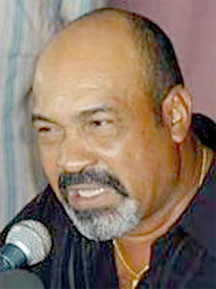A senior official in Guyana’s gold-mining sector has said that it may well become more vulnerable to illegal cross-border operators in the wake of plans by neighbouring Suriname to take immediate steps to suppress illegal mining operations in that country.
“Depending on the extent of the clampdown in Suriname, Brazilian garimpeiros may definitely look at Guyana as an alternative location for their operations,” the source told Stabroek Business.

On Monday, during his New Year’s Day address to the nation, Suriname President Desi Bouterse announced that, beginning this month, his government will be moving to regularize the gold industry in Suriname’s interior, where Brazilians are among thousands of operators of illegal gold mines. The neighbouring South American republic has already established advisory commissions to draft policies aimed at eradicating illegal gold mining. The vast majority of the gold-mining operations in Suriname are illegal with the Canadian company IAM-Gold operating the only legal gold-mining operation in the country.
The source told Stabroek Business that it appeared that Suriname’s planned regularization of its gold industry “has to do with both safety considerations and with an eye on major foreign investments in the sector.” In November, seven miners were killed in a landslide at a mining pit at a location named Money Pit, southeast of the capital, Paramaribo.
On Monday, meanwhile, President Bouterse announced that his government will shortly be signing an agreement with Surgold, a joint venture operation that includes the US multinational Alcoa that will see the establishment of a second major gold mine in Suriname.
“It’s significant news for Suriname and if President Bouterse turns out to be serious about arresting the growth of illegal mining in Suriname, the illegal miners are bound to target Guyana where it is far easier to operate illegally. At the moment the Brazilians come and go pretty much as they please. In some mining regions they are pretty much accepted,” the mining sector source told Stabroek Business.
In his address Bouterse specifically identified the first half of January as the period within which the authorities will be taking action to regularize the gold industry which action will reportedly include restoring the presence of government agencies in mining areas.
Just days after Bouterse’s announcement, Commissioner of the Guyana Geology and Mines Commission William Woolford disclosed that gold production for 2010 had closed at 308,000 ounces, confirming predictions made by the Guyana Gold and Diamond Miners Association (GGDMA) that production would top 300,000 ounces for the second consecutive year. This year’s gold output marks another successful year for the sector, buoyed by continually rising gold prices.
While Guyana has been spared such major mining mishaps as occurred in Suriname last November, the industry source told Stabroek Business that the financial attractions of the gold industry resulting out of high world market prices meant that small operators in the sector were more prepared to take risks that could result in disaster. “Unless we move to reduce those risks similar accidents could occur here.”
Asked whether an increase in the number of garimperos here could create tensions in the gold industry the source said that “for the moment, at least,” the sector was large enough to accommodate more miners “without controversy.” On the other hand, the source said, an increase in the number of small operators is likely to give rise to an increase in the already high level of environmental transgressions in the industry.
Government has moved to put new regulations in place in the mining sector here to bring mining operations into conformity with environmental practices relating to the use of mercury, among other things. Additionally, new mining regulations also seek to ensure conformity with the government’s Low Carbon Development Strategy. (LCDS)
Suriname has been known to face major problems with illegal mining and the indiscriminate use of mercury in the gold extraction process. Additionally, unwholesome environmental practices have left trails of craters and polluted forests behind.




